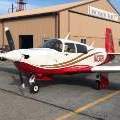Mooney Tail vs V Tail
-
Members Online
- 201Steve
- mike_elliott
- TCC
- AME
- 201Mooniac
- BloodRedSkies
- Taz
- peterl
- kaba
- Justin Schmidt
- Matthew P
- varlajo
- phxcobraz
- Rwsavory
- pirate
- PT20J
- BenP
- MikeOH
- AndreiC
- Obsession2
- mluvara
- CCAS
- MDMooney
- eman1200
- hammdo
- MoonFlyer68
- DonMuncy
- KSMooniac
- drstephensugiono
- 201er
- Jim Peace
- skykrawler
- Grumpy
- GeeBee
- redbaron1982
- Max Clark
- Mellow_Mooney
- Jake@BevanAviation
- bluehighwayflyer
- midlifeflyer
- exM20K
- amillet


Recommended Posts
Join the conversation
You can post now and register later. If you have an account, sign in now to post with your account.